Rotted manure, what is it, types and classification, how is it applied to the soil
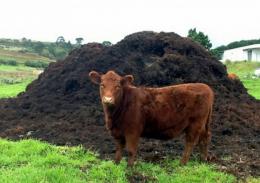
Depleted land cannot produce much harvest. Various means are used to restore its fertility.
Rotted manure is considered the best and safest, what it is, how to store and use organic matter, what useful substances it contains, how it can be dangerous - we will discuss these other questions about its use in agriculture in this article.
Content:
- Types of manure
- What does the composition depend on, what nutrients are contained
- How to speed up the rotting of manure, how to make it rot quickly
- What is semi-rotted manure, rules for its use
- Rotted manure, what it is, for what purpose it is used
- Is it necessary to cover with film during ripening and storage?
- How to fertilize, rules and timing of application to the soil
- The use of humus in a summer cottage
- How to use dry cow manure
- Why is manure applied in excessively large quantities dangerous?
Types of manure
They are distinguished by its manufacturer:
- the most useful horse,
- the most popular cow,
- aggressive pork,
- rabbit, sheep,
- as well as bird droppings.
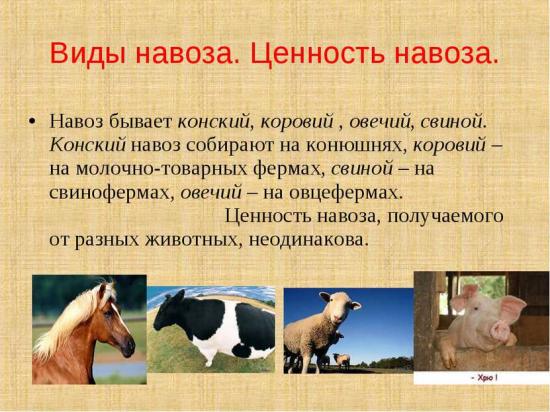
The degree of decomposition also affects the classification.
Once obtained, the organic mixture is considered:
- fresh - up to 3 months;
- half-rotted - after six months of lying;
- rotted - after a year of aging in special conditions;
- in a state of humus - after 2 years of aging.
Horse manure is considered the most valuable in terms of nutrient content., but it is not widespread due to the decline in the number of horses on farms.
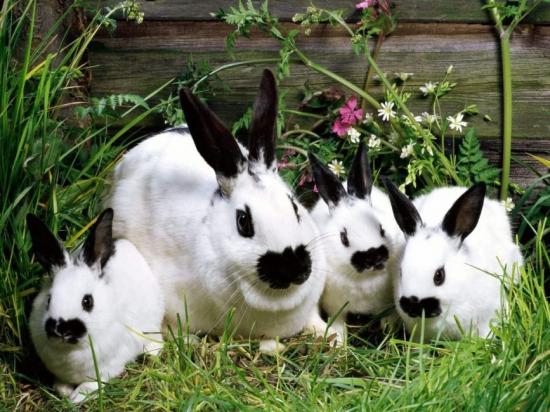
Cow feces have a less beneficial composition. Therefore, they need to be fertilized in increased volumes.
Pork is very caustic and should be used only in a completely decomposed state and in small doses.
What does the composition depend on, what nutrients are contained
The composition of manure directly depends on the conditions of detention, nutrition and the type of animal producing it:
- if the animals ate predominantly concentrated food, they will get high-nitrogen droppings;
- roughage consumed by ruminant livestock provides large amounts of potassium.
Comparing favorably with the mineral inorganic fertilizers offered by the chemical industry, which contain 2-3 useful substances, animal waste products are filled with a full range of elements necessary for plant growth and nutrition: K - potassium, P - phosphorus, N - nitrogen, Mg - magnesium, Cu - copper , Ca - calcium, Mn - manganese, B - boron, Co - cobalt and many others.
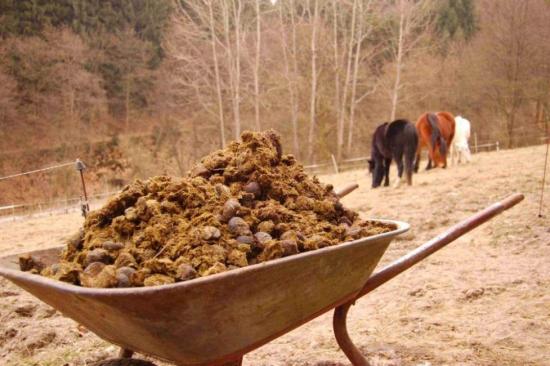
The quantitative ratio of substances is exactly what plants need.
Active substances from rotted manure can saturate the soil and nourish it for 3-5 years after feeding.
Even more useful information about what rotted manure is can be found by watching the video:
How to speed up rotting, how to make it rot quickly
For all its positive properties, manure has a noticeable disadvantage - it takes a long time to mature. To get a safe rotted product, you need to wait a year or more.
The chemical industry offers special products - enzymes that accelerate the ripening of compost. They contain only biological natural ingredients, they are easy to use and begin to act instantly, accelerating the decomposition process.

If you do not use special enzymes to quickly digest organic matter, you can speed up the process a little by creating special conditions for the manure heap:
- hide from direct sunlight;
- give a clear grouped shape;
- dig up the top of the heap several times a week, breaking up clods;
- harrow the deeper part;
- during drought, moisten the top layer.
In such conditions, after a couple of months you can remove and use the top rotted layer for its intended purpose.
What is semi-rotted manure, rules for its use
The stage of decomposition of biological excrement that has lain in the air for more than 3 months is called half-rotted. The mass contains completely decomposed parts and partially preserved lumps of biomass.
During this time, the straw bedding rots almost completely and takes on a dark brown color. It can still be identified upon visual inspection, but when picked up, it easily crumbles and spills out.

Semi-rotted - less aggressive in comparison with fresh livestock waste product. It can be used as a basic fertilizer in diluted form. Most often it is laid on poor soils for digging in the autumn.
By the spring harvest, it manages to completely rot and enrich the soil before sowing.
Crops suitable for feeding with this fertilizer are zucchini, cabbage, cucumbers and spinach.A year after feeding the soil with a half-rotted product, you can plant potatoes, tomatoes, root vegetables and strawberries in this place.
Let's watch a useful video about the rules for applying manure and humus:
Rotted manure, what it is, for what purpose it is used
Organic fertilizer that has withstood the fermentation process for a year looks like a homogeneous mass interspersed with black straws that easily crumble when rubbed.
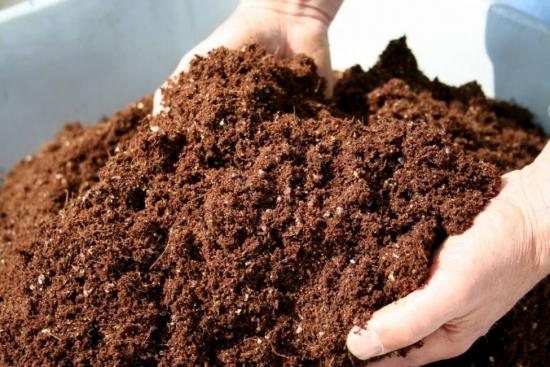
The color of the rotted product is black or dark brown. This stage of organic matter ripening is one of the most valuable in terms of nutrient saturation and safety for plant roots.
Well-rotted organic matter Suitable for plant feeding and soil nutrition. This mixture is also suitable for making a nutrient substrate for spring seedlings in the ratio of one part manure to two parts soil.
Is it necessary to cover the pile with film during ripening and storage?
During the natural fermentation of feces, heat and gases are released. If the goal is to get the rotted product as quickly as possible, then you should not cover the pile. On the contrary, it needs to be loosened and tossed as often as possible.
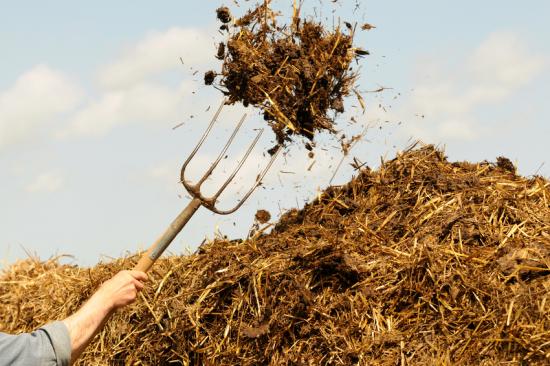
In this case, with free access to oxygen, decomposition processes will go faster and the fertilizer can be used in 2-3 months.
The film and dense laying layer prevent nitrogen evaporation. If the goal is the quality of organic matter, and not speed, then it is necessary to limit the access of oxygen to the fertilizer. To do this, manure is placed in layers in a hole or a pile is formed, each layer being compacted tightly.
The upper part must be covered with film.Thus, a greenhouse effect is created inside the heap with high temperatures that destroy all microorganisms and bacteria, larvae and helminth eggs.
How to fertilize with manure, rules and timing of application to the soil
Fresh organic matter can only be used as biofuel or liquid fertilizer diluted 1:10. Direct contact with plants should be excluded, since high nitrogen content can cause chemical burns on the roots and stems of plants.
Semi-rotted can be laid during the spring digging of the earth or used in diluted form for nutritious watering.

Fermented organic matter more than a year old is used as root fertilizer.
Humus older than 5 years is similar to black soil; it is used as an independent fertile soil. The concentration of nutrients in it is significantly reduced compared to a 2-year-old, rotten one.
The most effective is considered to be fertilizing the soil with one-year-old horse manure, carried out on the same day as digging the site. Fresh horse droppings can be applied when digging up poor soils in the fall in the amount of 5-6 kg per 1 sq.m.
The use of humus in a summer cottage
Completely fermented manure is transformed into humus. The black crumbly substance is filled with microelements and can transform a barren area into a real oasis in one or two seasons. Its nutritional ingredients are suitable for all garden crops in Central Russia.
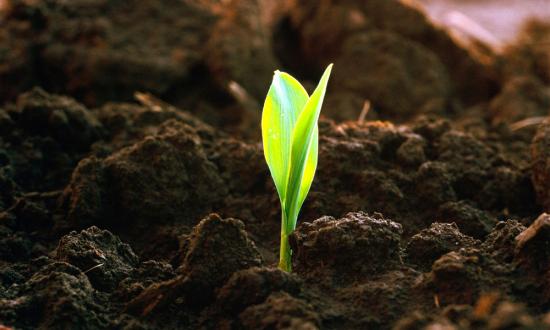
The exception is plants that are accustomed to poor soils: orchids, cacti, landscape plants for alpine slides.
To nourish the soil and increase its fertility, completely rotted manure mixed with plant organic matter is distributed on the dug up soil at the beginning of spring work or during the autumn preparation of the site for wintering.
Recommended consumption is a bucket of humus per 1 sq.m. Earth. Well-rotted organic matter is also placed under cucumbers and pumpkins in the spring at a depth of 15 centimeters.
Spring fertilizing of plantings of flowers, berries and vegetables requires 3-4 buckets per 1 sq.m.
In summer, dissolved humus is used as a nutritional supplement for root and foliar action. Compost is placed in a five-centimeter layer under the strawberries after harvesting. Humus must be separated from the plants with sawdust or straw mulch.
Raspberries receive humus as mulch 5 cm thick.
The soil under greenhouses should receive compost fertilizer in the spring.
How to use dry cow manure
Dried in the open air, the waste product of ruminants - cows and bulls - retains all the trace elements and minerals contained in fresh cow excrement.
This type of organic matter is considered an effective and valuable fertilizer due to the following properties:
- suitable for plants of any type, except onions and carrots;
- in flower beds, dry cakes are used to cover the surface of the soil as mulch;
- easily mixes with any other components, dissolves, crumbles;
- Reliable soil protection and prevents weed growth.
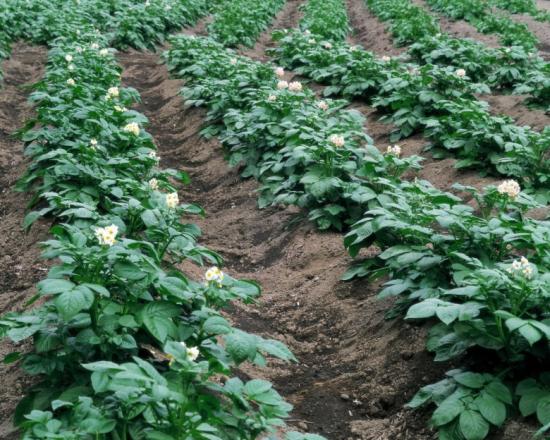
Dry mullein is also used to feed all types of plants in the summer by watering the root area with mullein substrate mixed with water and spraying weakened plants with a weakly concentrated solution of manure.
Why is manure applied in excessively large quantities dangerous?
Manure requires compliance with the rules for its use. In case of uncontrolled use according to the principle “the more, the better”, it can not only reduce the yield, but also leave the area in the most deplorable state, destroying all the vegetation existing on it.
So, let’s remember the rules for applying manure to the soil:
- Let's say no to fresh product. Rotting processes take place at elevated temperatures, rising to +80 degrees. Such heat can simply burn fertilized plant roots. If you still can’t wait to give bait, the gentlest way to feed the plants is to water them with a solution of 1 part manure to 10 parts water.
- If freshly obtained organic matter is used by a gardener as a biosource of heat for a greenhouse or “warm bed,” then the soil must be deoxidized with slaked lime or ash. Fresh produce greatly increases the acid level of the soil, which can negatively affect the growth and taste of the crop.
- Oversaturation of the soil with humus or rotted manure leads to an increased level of nitrates in the crop.
- Fecal matter contains: helminth larvae, weed seeds, pathogenic bacteria and microorganisms. After 2 years of overheating, almost all living organisms die, and the remaining biomass will only bring benefits.
Relying on the knowledge of experienced gardeners, purchasing high-quality manure from proven places and fermenting it correctly, you can get excellent results in the form of lush vegetation and a rich harvest on your site.

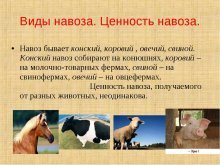
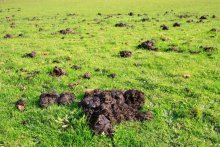
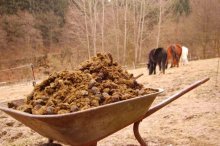


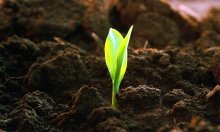
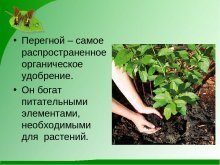
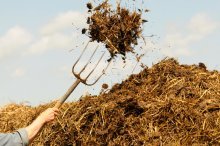
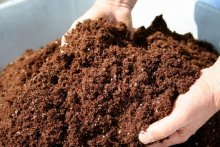
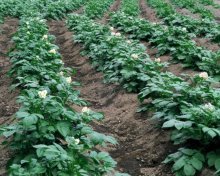
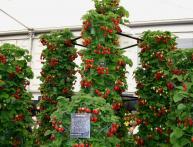
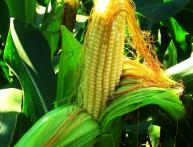
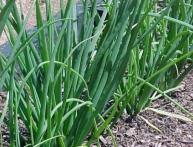

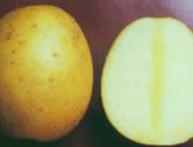
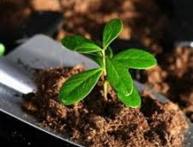
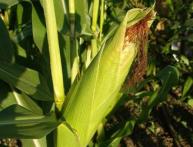

Comments
Well, not everyone will be able to withstand manure until it becomes humus, that’s for sure, sometimes this happens to us. But more often we fertilize with rotted manure; we no longer have it lying around.
In order for the manure to quickly turn into fertilizer, a pile of it will need to be turned over periodically with a pitchfork. In this case, rotted manure will be received not in six months, but a little earlier.
The worst thing about this process is that if you stir the manure more often, it will stink longer. Not all people living in the village can afford this. We rarely mix for this reason alone.
At one time, we had six cows and so much manure accumulated that we decided not to collect it in heaps, but immediately scattered it all over the garden all winter. In the spring it was plowed together with manure. Which they later regretted. Since they couldn’t get rid of the weed all summer. He grew by leaps and bounds.